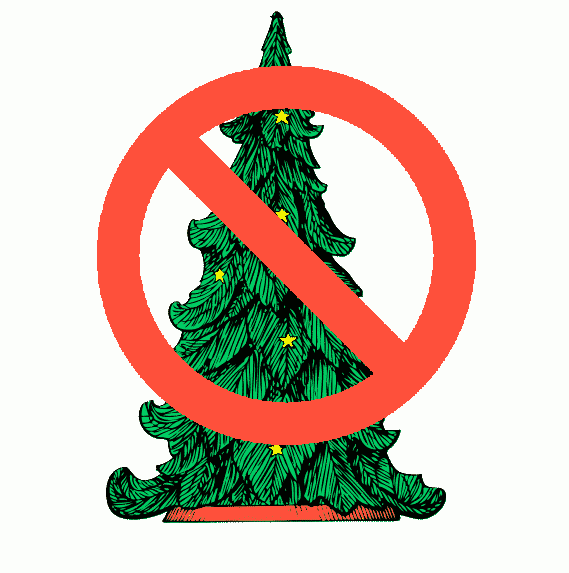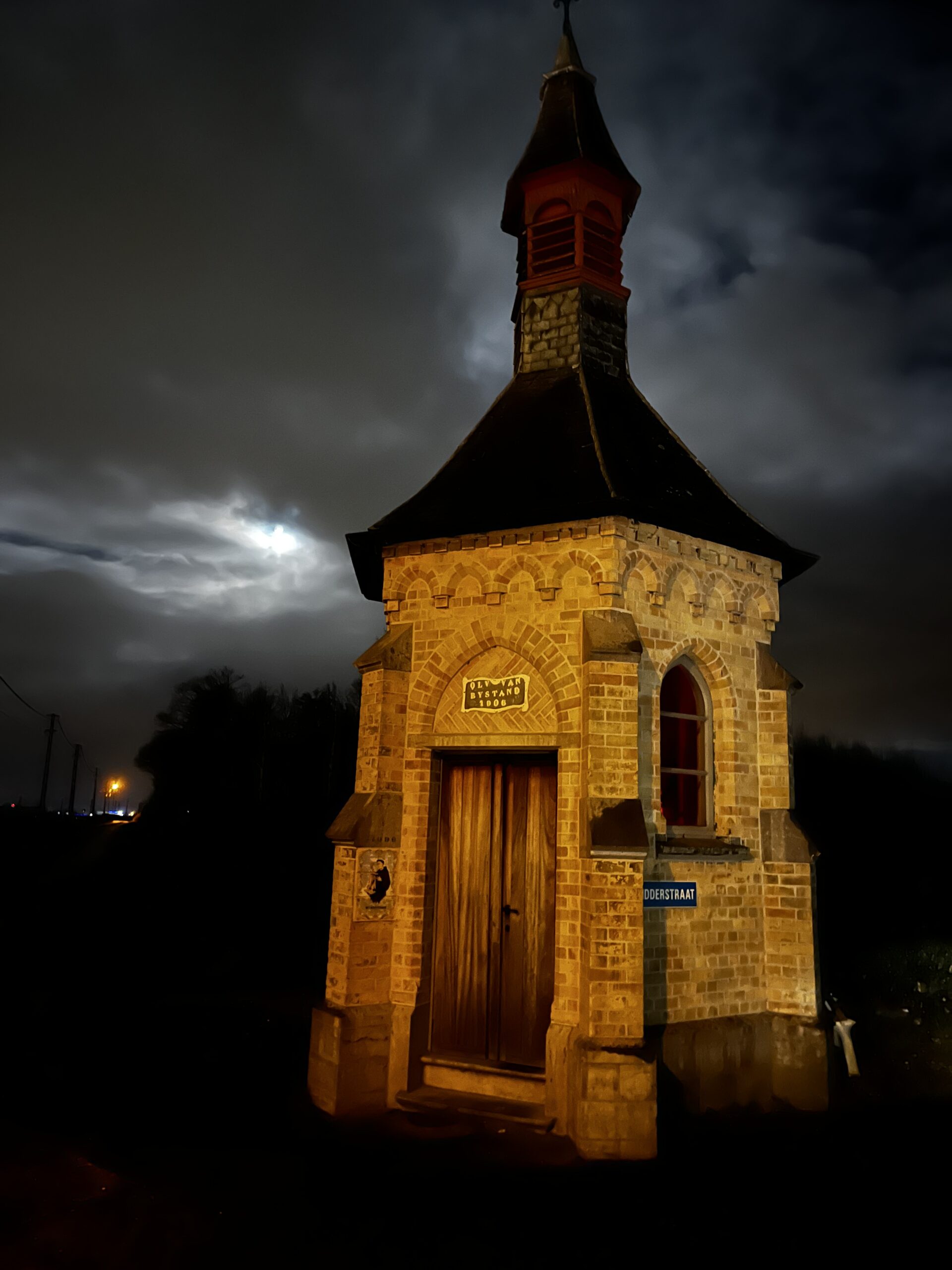This is a strange blog post to have to write, but it seems it is still relevant in 2022. There is a lot of hubub out there in the Blogosphere, about how bad certain Heathens are for celebrating Yuletide in late December (along with the rest of the World), instead of some more “authentic” celebration in Late January or maybe February. It seems these naughty Heathens are also tying the Yule Nights to the Winter Solstice, which to hear it told, is also very, very bad.
Let’s review some of the recent pronouncements that have begun circulating, and evaluate those in the context of West Germanic Heathenry— in the Migration Age, the Early Medieval period, and now.
ASSERTION 1: That ALL Germanic peoples began Yule celebrations in Late January.
This is a curious assertion that seems motivated by a desire in some modern Heathens to be more OBJECTIVELY RIGHT than other modern Heathens, and is not born out by primary sources at all. An oft cited source is the German Bishop Thietmar of Merseburg (c. 975 – 1080), who wrote in the 11th century (well after the conversion in his area) that the biggest Yule feast was held in January in the village of Lejre in Denmark. Let’s hold that thought for a moment.
The Anglo-Saxon ecclesiastic and scientist, Bede, wrote some three centuries before Thietmar, that:
The months of Giuli derive their name from the day when the sun turns back [and begins] to increase, because one of [these months] precedes [this day], and the other follows…
What this tells us is that the Yule months were named for a single day event, marking the longest night of the year. This would seem to imply that the names of the months sounded like the name of this event. That is, after all, what it means to derive a name from something. Both December and January were associated with the Yule season, With one month beginning before the commencement of the festival, and one month afterwards. The Heathen Anglo-Saxons would have considered “Month” and “Moon” to be synonymous, a month is the birth of a Moon, which occurs when the Lunar light first becomes visible. Bede tells us in The Reckoning of Time:
The age of a new Moon is more appropriately calculated from the evening hour than from any other time, and it will retain the age which began in the evening until the following evening. Should it befall that the Moon is lit up by the Sun shortly before evening, it must be counted as, and it must be, the first Moon as soon as the Sun has set, and it will be the first Moon immediately after sunset, because it has reached the hour when first it began to shine forth upon the Earth.
However, almost all practicing Heathens today accept that the Yule Nights were in fact plural celebrations (as attested in numerous sources) even if they were triggered by a single astronomical event. He goes on to say that:
“They began the year on the 8th kalends of January, when we celebrate the birth of the Lord. That very night, which we hold so sacred, they used to call by the heathen word Modranecht, that is, ‘mother’s night’, because (we suspect) of the ceremonies they enacted all that night.”
So here, we have a Heathen celebration, during the Yule months, and within the period identified by German sources as “Rauhnächte”, the Rough Nights. This is a 12 Night interval which begins according to surviving (Christianized) tradition, on the 25th of December. But wait…why would Heathens care about this arbitrary date in the Julian calendar? I’m so glad you asked. They wouldn’t. The reason for the season, as Bede clearly alluded to, is the Solstice. He makes it crystal clear that the Yule months are named after the Solstice event. He nowhere says that he thought Mothernight was actually the date on which it occurred. So…let’s back up and talk about what all these players in this centuries-old drama thought the Solstice actually was.
When the Early Medieval Church talks about the Midwinter event, or the Solstice, they mean the 25th of December. They blatantly placed the “birth” of Jesus on this date to avail themselves of the powerful imagery Heathens and Classical Age pagans had already evoked in their own ceremonies, and ecclesiastic scholars even then were under no illusions about it:
This is what some of the pagans say; and very many of the Church’s teachers recount things which are not dissimilar 268 to these about time, saying that our Lord was conceived and su¡ered on the 8th kalends of April [25 March], at the spring equinox, and that he was born at the winter solstice on the 8th kalends of January [25 December]. And again, that the Lord’s blessed precursor and Baptist was conceived at the autumn equinox on the 8th kalends of October [24 September] and born at the summer solstice on the 8th kalends of July [24 June]. To this they add the explanation that it was fitting that the Creator of eternal light should be conceived and born along with the increase of temporal light, and that the herald of penance, who must decrease, should be engendered and born at a time when the light is diminishing.
-Bede (The Reckoning of Time)
Equally as obvious, scholars from various pagan faiths and Christianity as well, already knew in the Eighth Century that:
- The Julian Calendar was flawed
- The Astronomical Winter Solstice was not on the 25th of December (Julian), as of the Eight Century
Bede knew it himself, and said so. Based upon the observation of “Men from the East” AKA Egyptians, he averred that it should have been the 21st of December(J) in his time which is closer to the mark. BUT… one more wrinkle. The Julian Calendar was losing days. If we were to go back in time and apply our modern (Gregorian) calendar to the the place Earth occupied in space in the year 725 as Bede wrote, we would find the Winter Solstice on the 17th. That is, for anyone who is counting, a THIRD way to reckon the Winter Solstice. Confused?
 So were the early Church Fathers. They had adopted a Solar calendar from the Romans, and having stuck all sorts of feasts and fasts and other things on various Kalends of this or that, they got comfortable with the idea of Christ’s birthday on the Winter Solstice…the 25th of December. Recall, he wasn’t born then and they all knew it, this is merely marketing. Trouble is, observing the skies would tell a learned person that the Solstice event isn’t really happening on this date, and is actually going to be getting further away from it as the years go by! Marketing, friends. It no longer matters. The Church left Christmas on the 25th because they weren’t going to change all those cute Advent calendars, we can’t have the savior’s birthday changing dates willy nilly…think of the optics!
So were the early Church Fathers. They had adopted a Solar calendar from the Romans, and having stuck all sorts of feasts and fasts and other things on various Kalends of this or that, they got comfortable with the idea of Christ’s birthday on the Winter Solstice…the 25th of December. Recall, he wasn’t born then and they all knew it, this is merely marketing. Trouble is, observing the skies would tell a learned person that the Solstice event isn’t really happening on this date, and is actually going to be getting further away from it as the years go by! Marketing, friends. It no longer matters. The Church left Christmas on the 25th because they weren’t going to change all those cute Advent calendars, we can’t have the savior’s birthday changing dates willy nilly…think of the optics!
The Germanic Heathens, far removed from such concerns, were watching the skies, and they did know about when the Solstice was. They weren’t using the Julian calendar, but a Lunisolar Calendar, in which Moons are one track, the Earth on it’s journey around the Sun is on another, and the two have to be trued up somehow or they will get wildly off from one another. That “somehow” is, you guessed it…the Winter Solstice. During the Summer solstice, you know where you are in your journey around the Sun, but observability of the Moon can be problematic. You need to know some things about the Moon, and how it stands during the time around Midwinter, so you can reconcile the two tracks. What you need to know is, will the New Moon that starts the “After Yule Month” appear during a certain number of nights following the Winter Solstice, or not? The more accurate your reckoning of the Solstice, the better. If the sliver of the New Moon appears during this interval following the Solstice, your lunar calendar is getting off kilter from the Solar, and a thirteenth month needs to be added to the New Year to make it right again. And what is this magical interval following the Solstice? Eleven Nights. Yep. Because the Lunar “year” is only 354 days, 8 hours long. You need to add eleven nights to the full set of lunations, in order to match up to the Solar year, which is 365 days long. That makes twelve nights total, counting the onset of the Solstice. The Twelve Nights of the Yuletide, AKA the “Twelve Nights of Christmas”. It is key to note here, the Christians adapted this from Heathenry, not the other way around. The Christian rationale for “why twelve?” is ludicrously thin, and due to their use of the Church’s calendar, they didn’t need to care how many nights Christmas had anyway. Only people who cared about a Lunisolar calendar would have found the number significant.
So Christians can celebrate Jesus’ birth as long as they like, or not. As I noted above though, West Germanic Heathens need to keep the Yule for twelve nights, (or at least track them) in order to make sure we have our Lunisolar calendar for the new year aligned right. Ideally we would want to reckon the first night, (let’s call it Geóhol), as the night of the actual astronomical solstice. But if you didn’t care than much about accuracy and arbitrarily placed the “Solstice” on either the 21st of December (as did pagan scholars in the Middle East) or the 25th (as did the Church) your Twelfth-Night Celebrations, traditionally pretty baudy with possible cross-dressing and wild beasts and feral children roaming the town…would indeed fall in January. Early January… around what the Christians dubbed “The Feast of The Epiphany”, apparently NOT in reference to their sudden realization that they could plop feasts on virtually every Heathen festival and call it the Night of St. Someone-or-Other, and get attendance way up. The bottom line here is, Yule tide can begin on the solstice, and the parties can still be raging in January. Both things can be true.
 So…back to Mr. Thietmar (or is it Mr. Merseburg??) who says (in the Eleventh Century, kids) that the most important festival in this one Danish village is in January. Well… no. He didn’t. We was uh, misquoted. That’s being kind. What he said was, every Nine Years on the Night of Epiphany, these Danes would sacrifice 99 men, and 99 cocks, and 99 of other sorts of creatures in an orgy of blood that archaeologists can’t exactly uh… prove. He doesn’t mention the word “Yule” in his Chronicon in chapter 17 as asserted, *at all*. So unless we now think Yule was a murderfest that only happened every nine years… that would be a lie.
So…back to Mr. Thietmar (or is it Mr. Merseburg??) who says (in the Eleventh Century, kids) that the most important festival in this one Danish village is in January. Well… no. He didn’t. We was uh, misquoted. That’s being kind. What he said was, every Nine Years on the Night of Epiphany, these Danes would sacrifice 99 men, and 99 cocks, and 99 of other sorts of creatures in an orgy of blood that archaeologists can’t exactly uh… prove. He doesn’t mention the word “Yule” in his Chronicon in chapter 17 as asserted, *at all*. So unless we now think Yule was a murderfest that only happened every nine years… that would be a lie.
Regardless, just as Christmas itself is on December the 25th, but there are Twelve Nights of Christmas festivities. “Yule Night” is on the Solstice, but you have several nights of Yule, how many exactly over how long being a function of how long the beer lasts, and how important the observation of the Midwinter Sun (and Moon) is in your geographical area—a point I come back to down below. Suffice to say, Twelfth Night “Distaff Day” as they later came to call it, could get pretty rowdy and is indeed in the month of January, now as then. But these feasts are still triggered by a solar event in December. Which leads us to…
ASSERTION 2: Yule has nothing to do with the Solstice, it’s has something to do with moon cycles.
Yikes. So, this seems to be the product of some very bad attempts by bloggers to evaluate some very bad efforts by Google to translate ONE very recent, non peer-reviewed paper by a Swedish professor who was trying to make a point about crappy weather in Northern Scandinavia, and wasn’t trying to speak to the subject of the Anglo-Saxons or Continental Saxons at all. The primary sources for this thesis, that the Swedes living in or near the Arctic Circle in the Medieval period(s) used a number of lunations to help time their Midwinter celebrations, (due to observations of Solar events being unreliable) were so-called “runic calendars” created by Christian peasants in the 10th Century. Some were made much later.
On the topic of solar observations in the Arctic Circle, why would they be unreliable? Well honestly… did nobody watch 30 Days of Night (2007)? The Sun never rises around Midwinter up there! There are literally weeks of total darkness, which constitutes an “edge case” if I ever heard of one. Let’s also consider, that the runic calendars are not reliably an indicator of Heathen beliefs, nor is the so-called Misseri Calendar that was crafted in Iceland within one human lifetime of the end of Heathendom in Europe. But when we DO look for sources that come from the pre-conversion era to validate this thesis we find only this, attested by Procopius, a Late Antique Greek scholar:
Around the time of the winter solstice, the sun is never to been seen on this island for forty days, but the eternal night encloses it. And when thirty-five days have passed in this long night, certain men are sent up to the top of the mountains, because that is their custom. When those men barely can see the sun from that point, they return to the village with the message, that within five days the sun will shine on them again. The people would then celebrate a party about 20 days after the winter solstice, and this would be the biggest party held by the natives at Thule.
So even here, where we see an early attestation (The 6th Century CE) of a possible late January Yule celebration, it is a solar phenomenon that fundamentally tells them when to start the celebration, they are simply postponing the parties until it feels more appropriate to celebrate the returning Sun, because the Solstice day itself is dark all day. Not conducive to holiday cheer, that. No mention is made here of any lunar reckoning of any kind. These people he refers to probably lived on the Island of Smola, or at least, somewhere North of the Orkney Islands, in a region called by the scholars of Late Antiquity and the Middle Ages, “Ultima Thule” because they considered it to be literally at the edge of the World. This is not at all like living in Southern England, or the Lower Rhine area. Still, they knew what the Solstice was, and knew that 35 days later, they should commence their observations.
Some actual Heathens living in far northern climes may indeed have added some different arbitrary number of days after the Solstice (using the Lunar cycle) before they got the party started, for all I know. But this waiting period is just arbitrary. Ultimately Yuletide begins with the Solstice, or with the solstice plus N days. In places where the sun can actually be counted upon to rise in the morning, it seems to have been the former. Unbelievably enough, different people in different places do things a little different.
Another chronicler who is often trammeled with this idea that the Yule should occur after so many moons following some other Full moon, or the like, even in regions where that wouldn’t make any sense, is Snorri Sturluson. This well known skald, also a Christian from the Middle Ages himself, lest we forget, is credited with writing the Saga of Hakon the Good. In this chronicle we are frequently reminded, he writes that Hakon persuaded the Heathens in Norway to celebrate Jol (Yule) on Christmas, rather than “Midwinter”– a term used by scholars, historians, and scientists the world over to mean “The Winter Solstice” even if certain farmers in or near the frozen hellscape of the Arctic Circle should choose to use it in the Vernacular to mean “The darkest depths of Winter” which is important if you are a farmer, but not quite the same thing.
In fact, most translators helpfully annotate the Saga when this is brought up, to indicate the date December 14th, which would indeed be about right, during the period Snorri claims this all happened. That is, December 14th… Not January 14th. So a festival beginning on the 14th would be potentially wrapping up, a week before Christmas, not months away. The idea that the bondes of Norway, who later revolted and forced Hakon to eat Horse flesh as part of a Blót would willingly move their most sacred festival over a month from it’s traditional spot to please their Christian king is highly questionable, and even if true, is irrelevant to Germanic Heathenry in the Migration Age. However, just to tie a bow on the whole Snorri angle, since we are already discussing it…maybe he didn’t mean the 14th? Maybe he didn’t mean the Solstice was Midwinter, maybe he meant…something…else?!
Well I don’t know what was in his mind, but what he did say about seasons was:
Frá jafndægri er haust, til þess er sól sezt í eykðarstað. Þá er vetr til jafndægris. Þá er vár til fardaga. Þá er sumar til jafndægris. Haustmánuðr heitir inn næsti fyrir vetr, fyrstr í vetri heitir gormánuðr, þá er frermánuðr, þá er hrútmánuðr, þá er þorri, þá gói, þá einmánuðr, þá gaukmánuðr ok sáðtíð, þá eggtíð ok stekktíð, þá er sólmánuðr ok selmánuðr, þá eru heyannir, þá er kornskurðarmánuðr.
From the equinox it is autumn until the sun sets in the position of none. Then it is winter until the equinox. Then it is spring until the moving days. Then it is summer until the equinox. Harvest-month is the name of the last one before winter, slaughter-month is the name of the first one in winter, then it is frost-month, then ram-month, then Thorri, then Goi, then single-month, then cuckoo-month and seed-time, then egg-time and lamb-fold-time, then it is sun-month and shieling-month, then there is hay-making, then it is the month of corn-reaping.
-Snorri Sturluson, Edda, (Skáldskaparmál), edited by Guðni Jónsson
So no, I don’t think he did mean something else. This synopsis of the calendar as he understood it, is described in the same lay as a number of events that involved the pagan Norse Gods and their mortal adherents, so he seems to think he is describing a system of calculating seasons from dim antiquity, and he says right here that it is Summer until the Autumnal Equinox, and then Winter until the Vernal Equinox, which doesn’t place early February at “Midwinter” by any sensible reckoning, whether one uses the Solstice as a guidepost or not. I can only report what he actually said here, gang. In point of fact, he’s talking about the Misseri Calendar that didn’t really exist as such until his parents’ time, and was created by illiterate colonists in Iceland from different older calendars, but whatever. He nowhere says Midwinter is a secret code for some arbitrary lunar event, and he clearly states Winter goes from Equinox to Equinox, and Late January or Early February is not midway between the equinoxes, sorry. It just isn’t. Regardless of what is true, we cannot claim that is what Snorri thought when he wrote this. He seems to be using the word ‘Midwinter’ to mean what everyone else in academia was using it to mean, the Winter Solstice. He nowhere mentions the moon in this chronicle, in connection with Jol, at all.
In conclusion, a vast, overwhelming mountain of anecdotal evidence, folklore, surviving Yuletide traditions and written treatises on the subject indicate that the Saxons had at least three named Yuletide feasts over the course of a 12(ish) night period, also called Yule, Yuletide, The Twelve, or the Rough Nights. This festival took place in what we would call late December and early January, straddling the Christian festival of Christmas. If modern heathens begin this festival on the night of the Astronomical Solstice, it will still last into early January today, as the 20th/21st of December is now a correct dating of the event in the Gregorian calendar. This is perfectly authentic. If modern-day, mostly American and British adherents of a Norse-centric reconstruction of Heathenry wish to celebrate the Yule in February in honor of that “dim Ultima Thule” or to show solidarity with Iceland, this is perfectly agreeable, but it is not appropriate to cast aspersions on the rest of us because we refuse to adhere to the One True Way(tm) that has been broadly and incorrectly foisted upon Germanic Heathens by a small minority. It is also inaccurate to blame this attitude on the “Saxons”. The Saxons don’t deserve to have their name brought into this bruhaha, because in Saxony as in England, the Sun actually rises at Midwinter. Westphalia != Iceland. Migration Age Anglo-Saxons were not using a time machine to inform them on how to set up the Calendar using 10th or 13th, or 17th century Christian runic calendars from Iceland as an example. Especially as most Icelandic heathens actually celebrate Jol in…December.
Let’s start being intellectually honest about why we do what we do. Anyone wishing to practice reconstructed Norse Heathenry should feel free to do so, and they should be honest about what they are doing. Don’t mislabel it. And don’t be preachy about your mislabeled religion.
Further Reading:
https://de.wikipedia.org/wiki/Rauhnacht – On the Rough Nights
https://katab.asia/special/De_temporum_ratione.pdf – Bede’s “Reckoning of Time” in English




